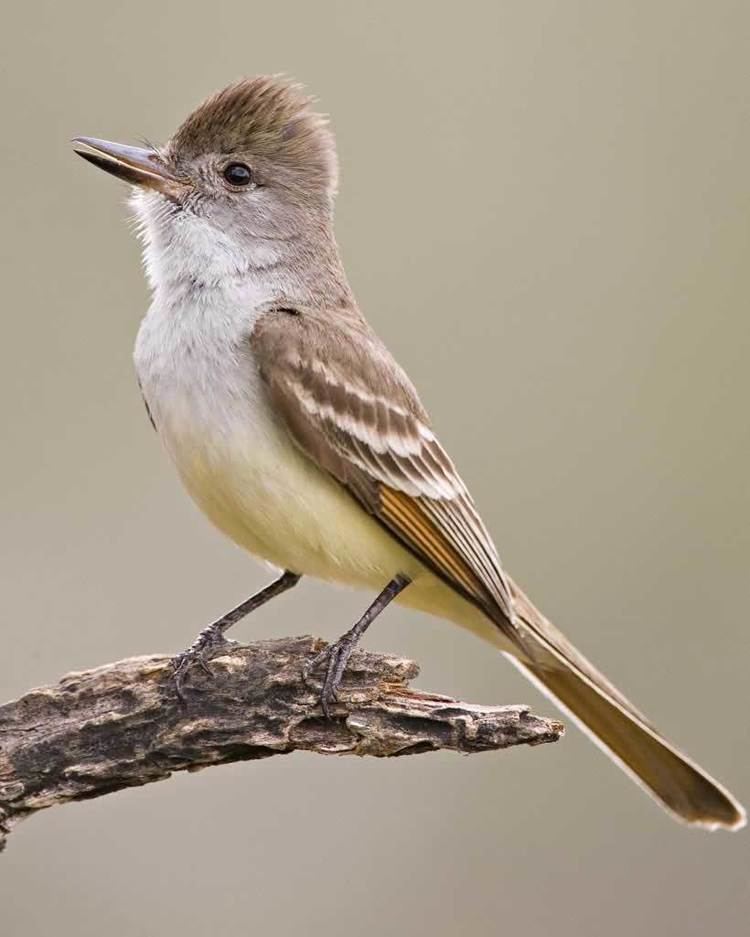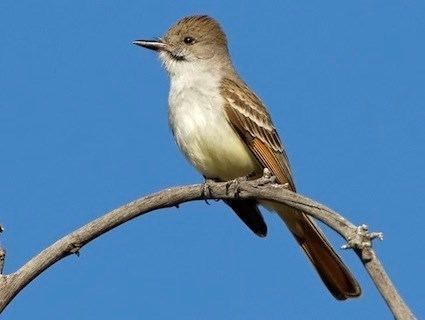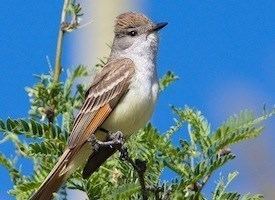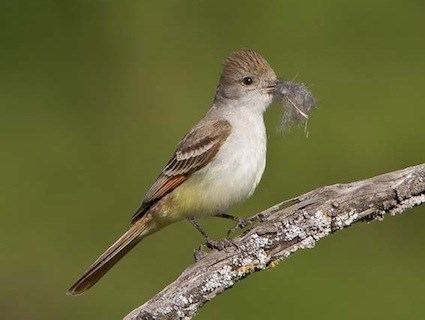Order Passeriformes | Phylum Chordata Family Tyrannidae Scientific name Myiarchus cinerascens Rank Species | |
 | ||
Similar Bird, Tyrant flycatcher, Western kingbird, Say's phoebe, Western wood pewee | ||
Ash throated flycatcher fresh pond
The ash-throated flycatcher (Myiarchus cinerascens) is a passerine bird in the tyrant flycatcher family. It breeds in desert scrub, riparian forest, brushy pastures and open woodland from the western United States to central Mexico. It is a short-distance migrant, retreating from most of the U.S. and northern and central Mexico, spending the winter from southern Mexico to Honduras. This bird is also prone to wander, with single birds often seen outside its normal breeding range as far away as the east coast of North America.

The nest is built in a tree cavity or similar natural or man-made hole, and the normal clutch is three or four eggs.

Adult ash-throated flycatchers are 19–20 cm (7.5–7.9 in) long and weigh 24–31 g (0.85–1.09 oz). The upperparts are olive brown, with a darker head and short crest. The breast is gray and the belly is a very pale yellow. The brown tail feathers and wings have rufous outer webs, and there are two dull wing bars. The sexes are similar.

The ash-throated flycatcher is separated from other confusingly similar Myiarchus species by its calls, a burry kabrick and a rough prrt or wheer heard year-round.

This species is primarily an insectivore that flies from a perch to catch prey from the ground or from foliage in the undergrowth, less often from branches and trunks, hardly ever in midair. Unlike many other tyrant flycatchers, it often moves on to another perch rather than returning to the same one. It also takes some fruit, especially in winter if insects are unavailable. Rarely, it takes small mammals and reptiles, which it kills by banging them against hard objects.
The flight has an easygoing, slightly bobbing pattern.
